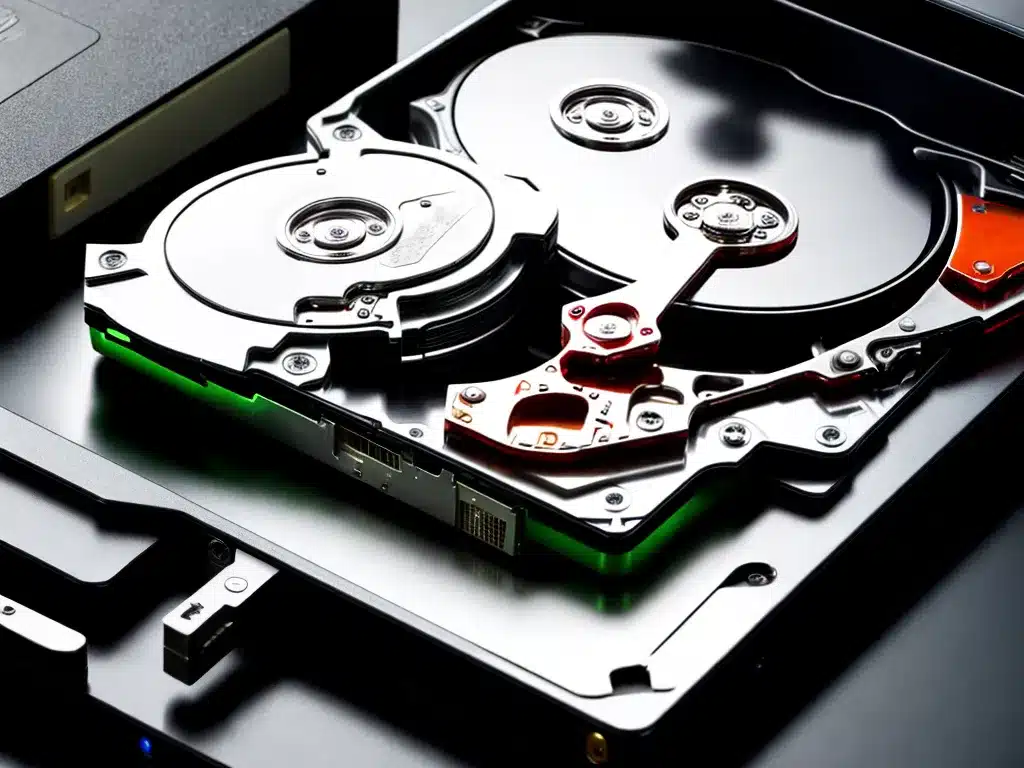Losing access to an external hard drive and the precious data inside can be stressful and frustrating. However, even when your computer fails to detect the drive, chances are the data is still intact and recoverable with the right tools and techniques. This guide will walk you through the most effective methods for recovering data from undetected external hard drives.
Why External Hard Drives Become Undetected
There are a few common reasons why an external hard drive may no longer be detected by your computer:
-
Disconnected USB cable – If the USB cable connecting the drive becomes loose or disconnected, the drive will not be detected. Reconnecting the cable firmly often fixes detection issues.
-
Power supply problems – External hard drives need power to operate. If the power supply is damaged or inadequate, the drive may not power on or be detected. Trying a different USB port, cable, or power adapter can help rule out power issues.
-
Driver problems – Outdated, corrupted or missing USB drivers can prevent external drives from being detected properly. Updating drivers and USB hub settings is worth trying.
-
Damaged drive components – If the USB bridge, controller board, motor or disk platters inside the external drive are damaged physically, the drive will fail to be detected or operate. This requires advanced data recovery methods.
-
File system corruption – If critical file system data structures get corrupted on the drive, the computer’s operating system may no longer be able to access and detect the drive.
First Steps – Basics to Try First
If your external hard drive is not detected, there are a few basic things to try before attempting more advanced data recovery methods:
-
Restart your computer – In some cases, simply restarting the PC can reset connections and allow proper detection of the external drive.
-
Try a different USB port – Use the USB port on the back of your computer directly, as front ports on a desktop chassis often lack power delivery. Test multiple ports if possible.
-
Replace USB cables – Faulty USB cables are a common culprit of drive detection issues. Substitute high quality cables designed for data transfer.
-
Check power supply – Ensure the drive is getting consistent power. Try using a USB Y cable with 2 USB connectors, or plug the drive into external power if available.
-
Update drivers – Update USB, chipset and disk storage drivers in case of software/driver related detection problems.
-
Inspect physical connections – Check that USB and power cables are plugged in snugly and securely on both ends, with no visible damage.
These basic steps can resolve many seemingly serious external drive detection issues without advanced recovery methods being necessary.
Using Disk Management to Detect Drives
The Windows Disk Management utility is useful for finding disk drives that are not visible in Windows Explorer but still detectable by your computer. To open Disk Management:
- Press Win + R to open the Run dialog box
- Type
diskmgmt.mscand press Enter
This opens the Disk Management console where local disks and external drives are displayed. Check if your undetected external drive appears here but not in Explorer. If it shows up but is listed as Offline, try right-clicking the disk and selecting Online. This may allow Windows to detect and access the drive again.
Data Recovery Software
If the external hard drive is still not detected in Disk Management, you will likely need advanced data recovery software to access the drive and recover your data. Here are some of the best professional recovery apps for external drives:
-
Stellar Data Recovery – works with all file systems and storage devices. Scans drives for recoverable data.
-
R-Studio – designed to recover data from external drives, RAID arrays, flash cards, and more.
-
EaseUS Data Recovery Wizard – retrieves lost files from external HDDs, USB drives, SD cards, etc. Filters data by file types.
These programs scan for recoverable data on external drives that are not being detected properly. They can recover lost files due to deletion, corruption, formatting, viruses, and more. Some even work if the file system itself is corrupted or damaged.
Removing the Drive from its Enclosure
In severe cases where the external hard drive is still not detected by recovery software, removing the bare drive from its external enclosure is necessary. This requires:
- A small Phillips head screwdriver to open the enclosure case
- A SATA/IDE cable and power supply to connect the bare drive directly
By extracting the physical hard disk inside the enclosure and plugging it into a desktop PC, the drive is essentially turned into an internal disk. Drive recovery software should then be able to detect and access the drive. Just be extremely careful not to damage the delicate drive components when opening the enclosure.
Last Resort: Disk Imaging & Data Recovery Specialists
If all else fails, turning to professional data recovery experts may be your last resort. Specialists have equipment to perform emergency recovery on drives with electrical issues, firmware problems, damaged/seized motors, and more.
They can perform specialized disk imaging to copy all readable data from the patient drive to a healthy image file. This lets them safely work to recover as much data as possible from the unstable drive.
The process is expensive, but legitimate data recovery firms like Gillware or Drivesavers offer a very high success rate for recovering data from drives in even the direst shape.
With the right tools and techniques, you have an excellent chance of recovering lost data from an undetected external hard drive. Just take it slow and steady, and avoid further modifying or damaging the ailing drive. Patience combined with specialized utilities or professional help can bring precious data back from the brink.













